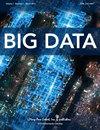Disease Motivated Model for Future Dynamic Computing
IF 2.6
4区 计算机科学
Q2 COMPUTER SCIENCE, INTERDISCIPLINARY APPLICATIONS
引用次数: 0
Abstract
Future computing entities should be capable of accessing computing resources for data-intensive algorithm execution. This should be realizable in operational contexts where internet accessibility to cloud contexts becomes challenging. Such a scenario describes developing contexts. In addition, future computing entities also make use of multiple operating systems in a context where the computing resources are reduced due to the use of partitions. The use of partitions is recognized to reduce the number of accessible computing resources and increase the overhead associated with computing resource allocation. The presented research proposes an architecture where an operating system is logically stowed and selectively activated without involving the use of partition. This frees up the number of computing resources previously locked in different partition systems and reduces the computing resource overhead. Analysis shows that the proposed framework increases the accessible computing resources by 14.6% on average. In addition, the computing resource overhead is reduced by 21 % on average.未来动态计算的疾病驱动模型
未来的计算实体应该能够访问执行数据密集型算法的计算资源。在云环境的互联网可访问性变得具有挑战性的操作环境中,这应该是可以实现的。这样的场景描述了开发环境。此外,未来的计算实体还会在由于使用分区而减少计算资源的上下文中使用多个操作系统。使用分区可以减少可访问计算资源的数量,并增加与计算资源分配相关的开销。本研究提出了一种架构,其中操作系统在逻辑上存储并选择性地激活,而不涉及使用分区。这释放了以前锁定在不同分区系统中的计算资源的数量,并减少了计算资源开销。分析表明,该框架平均增加了14.6%的可访问计算资源。此外,计算资源开销平均减少了21%。
本文章由计算机程序翻译,如有差异,请以英文原文为准。
求助全文
约1分钟内获得全文
求助全文
来源期刊

Big Data
COMPUTER SCIENCE, INTERDISCIPLINARY APPLICATIONS-COMPUTER SCIENCE, THEORY & METHODS
CiteScore
9.10
自引率
2.20%
发文量
60
期刊介绍:
Big Data is the leading peer-reviewed journal covering the challenges and opportunities in collecting, analyzing, and disseminating vast amounts of data. The Journal addresses questions surrounding this powerful and growing field of data science and facilitates the efforts of researchers, business managers, analysts, developers, data scientists, physicists, statisticians, infrastructure developers, academics, and policymakers to improve operations, profitability, and communications within their businesses and institutions.
Spanning a broad array of disciplines focusing on novel big data technologies, policies, and innovations, the Journal brings together the community to address current challenges and enforce effective efforts to organize, store, disseminate, protect, manipulate, and, most importantly, find the most effective strategies to make this incredible amount of information work to benefit society, industry, academia, and government.
Big Data coverage includes:
Big data industry standards,
New technologies being developed specifically for big data,
Data acquisition, cleaning, distribution, and best practices,
Data protection, privacy, and policy,
Business interests from research to product,
The changing role of business intelligence,
Visualization and design principles of big data infrastructures,
Physical interfaces and robotics,
Social networking advantages for Facebook, Twitter, Amazon, Google, etc,
Opportunities around big data and how companies can harness it to their advantage.
 求助内容:
求助内容: 应助结果提醒方式:
应助结果提醒方式:


